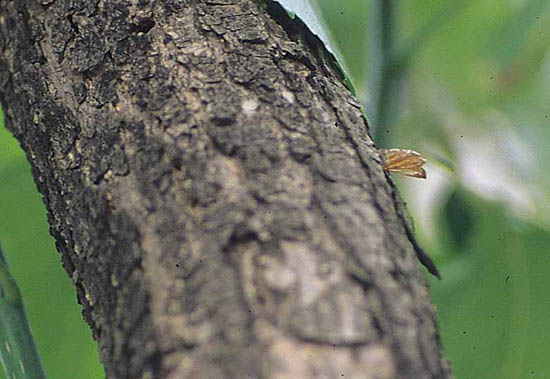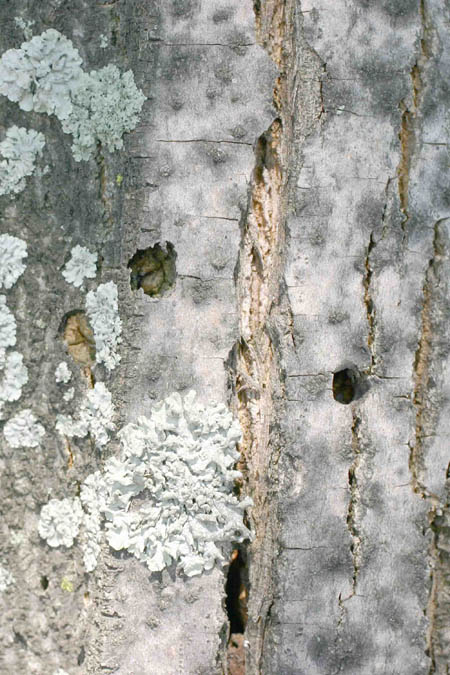Issue 2, May 12, 2014
Lilac/Ash Borer
Lilac borer and ash borer, Podosesia syringae, is susceptible to control in southern Illinois. Insecticidal application will be effective in one to two weeks in central Illinois, and a couple of weeks after that in northern Illinois.
The larvae are cream-colored, legless borers up to one-and-one-half inches long. They feed deep into branches and trunks, maintaining open tunnels by pushing frass, sawdust and fecal material, out of openings maintained through the bark. They pupate at tunnel openings, with empty pupal cases protruding up to one-half inch from the bark after adult emergence.
Adult moths mimic paper wasps, being about one inch long, having narrow clear wings, and a clearly separated abdomen with yellow banding. They also mimic wasps in behavior, being active during the day and flexing their abdomens as they walk on trunks and branches.

Lilac borer pupal exuvium protruding from trunk.
Pheromone lures are available for lilac/ash borer and are the most accurate way to time treatment. Male moths, which are attracted to the traps, emerge before the females. Traps should be checked two to three times per week, and the number of trapped males recorded. Once peak male catch is determined, apply insecticidal control one week later. Application can also be made just after the end of bloom of common lilac, Syringa vulgaris.
Lilac borer attacks large lilac trunks and is effectively controlled mechanically by cutting off trunks more than two inches in diameter at ground level. Maximum bloom and longevity is achieved by encouraging sucker growth.
Ash borer attacks recently transplanted young trees at branch crotches and along the trunk. Emergence holes are circular and one-quarter inch in diameter. Attack typically ceases three to five years after transplanting once the tree has adapted to site and sufficient root regrowth has occurred for normal annual shoot elongation. In older trees, ash borer attacks at wounds caused by rubbing branches in the canopy. It can be considered to be beneficial in this role as it hastens natural branch thinning.

Lilac borer emergence holes in ash tree.
Control lilac/ash borer with a trunk and branch spray of chloranitroniliprole (Acelepryn), clothianidin (Arena), or permethrin (Astro, Pounce). If treating lilacs, do not spray until after bloom to avoid harming pollinating insects. (Phil Nixon)
Author:
Phil Nixon